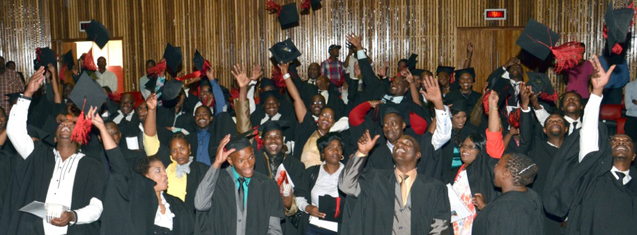 Court interpreters who have successfully completed a legal interpreting learnership.
Court interpreters who have successfully completed a legal interpreting learnership.
Photo: Stephen Collett
The University of the Free State (UFS) is a taking a leading role in changing the face and character of the South African court system, infusing it with qualified professionals.
The university’s Unit for Language Facilitation and Empowerment partnered with the Department of Justice and Constitutional Development as well as the Safety and Security Sector Education and Training Authority (SASSETA). This union lead to 63 court interpreters successfully completing a legal interpreting learnership.
These newly-qualified interpreters will from now on render specialised interpreting services in courts across our country.
Addressing the audience at the diploma ceremony held on the Bloemfontein Campus, Dr Derek Swemmer, Registrar of the UFS, said translators have an important role to play. ”Translation is a gift to those who do not understand the language that a person is speaking,” he said.
In her speech, Nonkululeko Sindane, Director-General in the Department of Justice and Constitutional Development, said the qualification will improve the professional status of court interpreting. She added that the learnership is based on a broader government policy on skills development. She mentioned that eight of those who received qualifications have been permanently employed by the department.
Praising the university for its role, Abbey Witbooi, Chairperson of the SASSETA board, said the diploma will allow qualified learners to contribute to social and economic transformation. This will ensure the protection of human rights in the court setting. In addition, it also provides equal access to a fair trial in terms of effective communication. “The fact that this is a first in the republic, speaks volumes for the extent of the commitment of collective leadership to realise the transformation agenda,” he said.